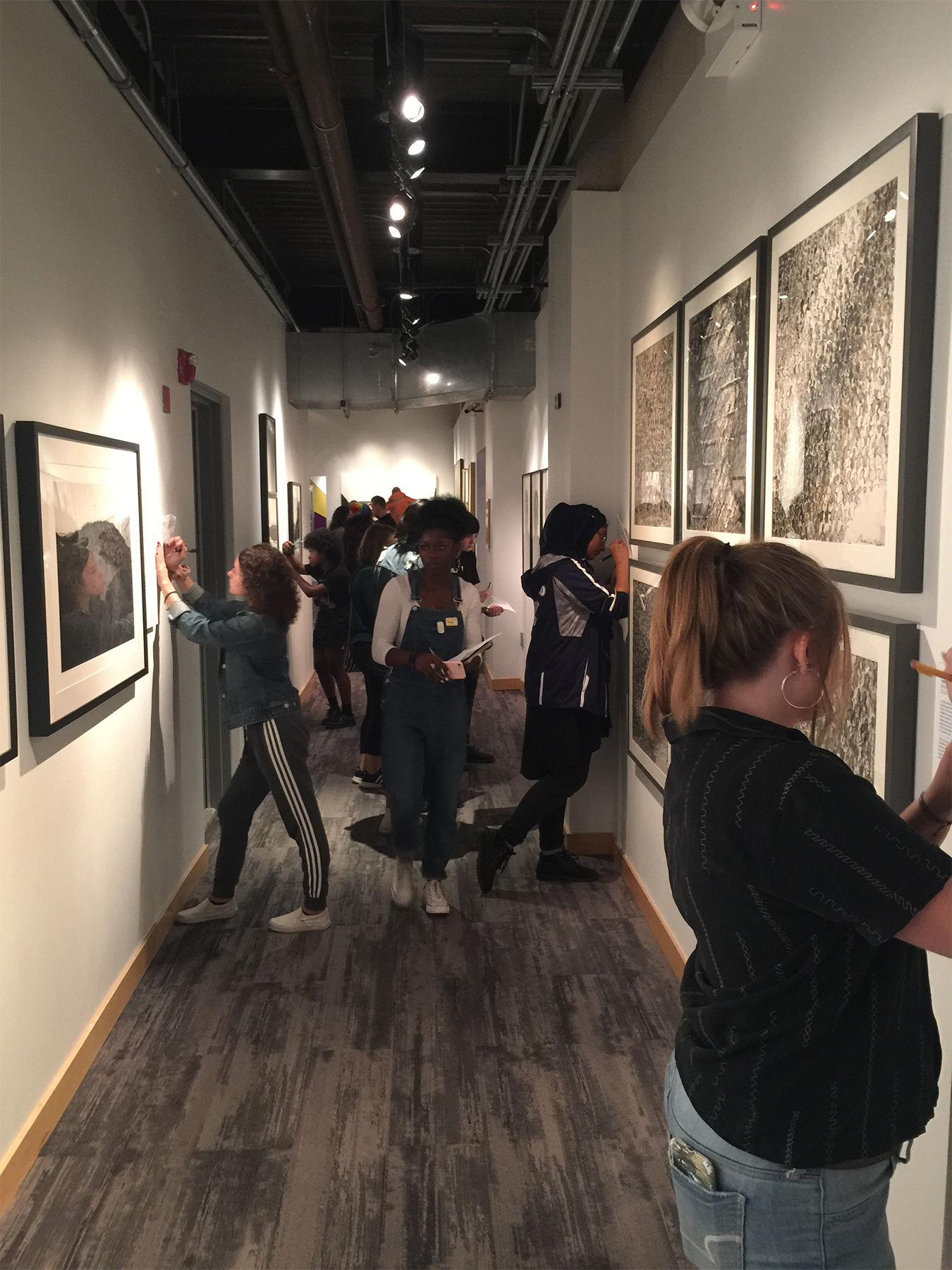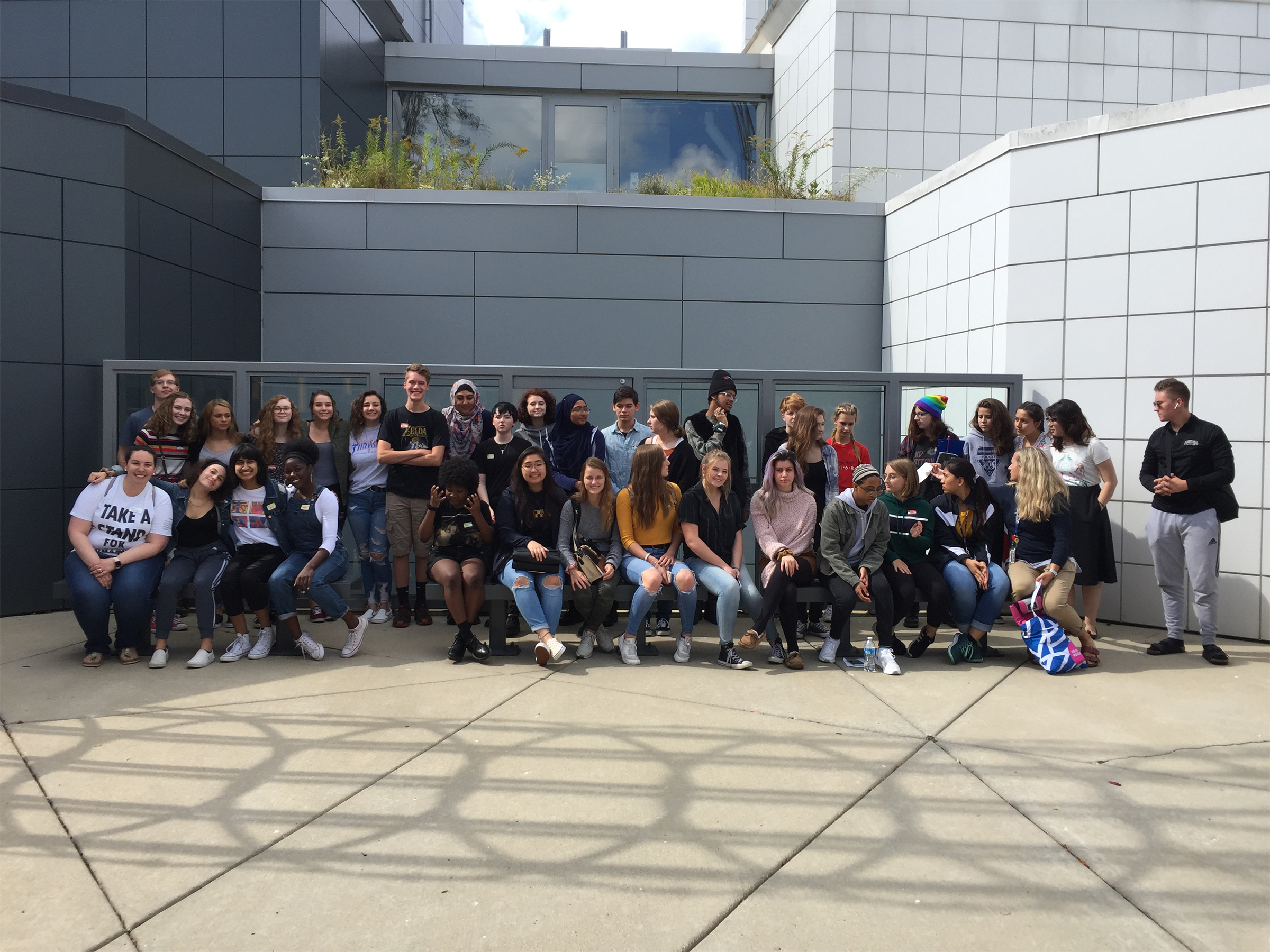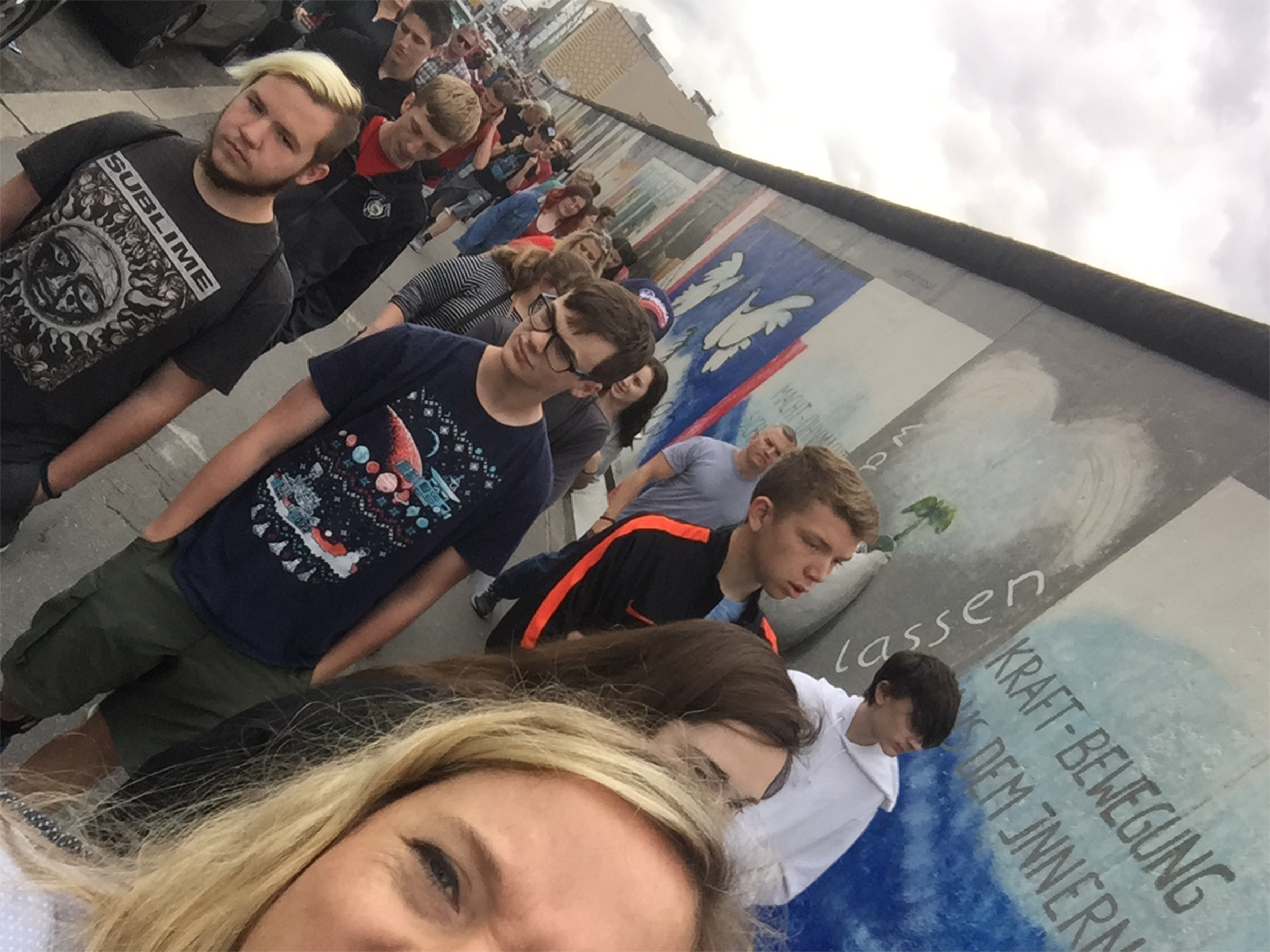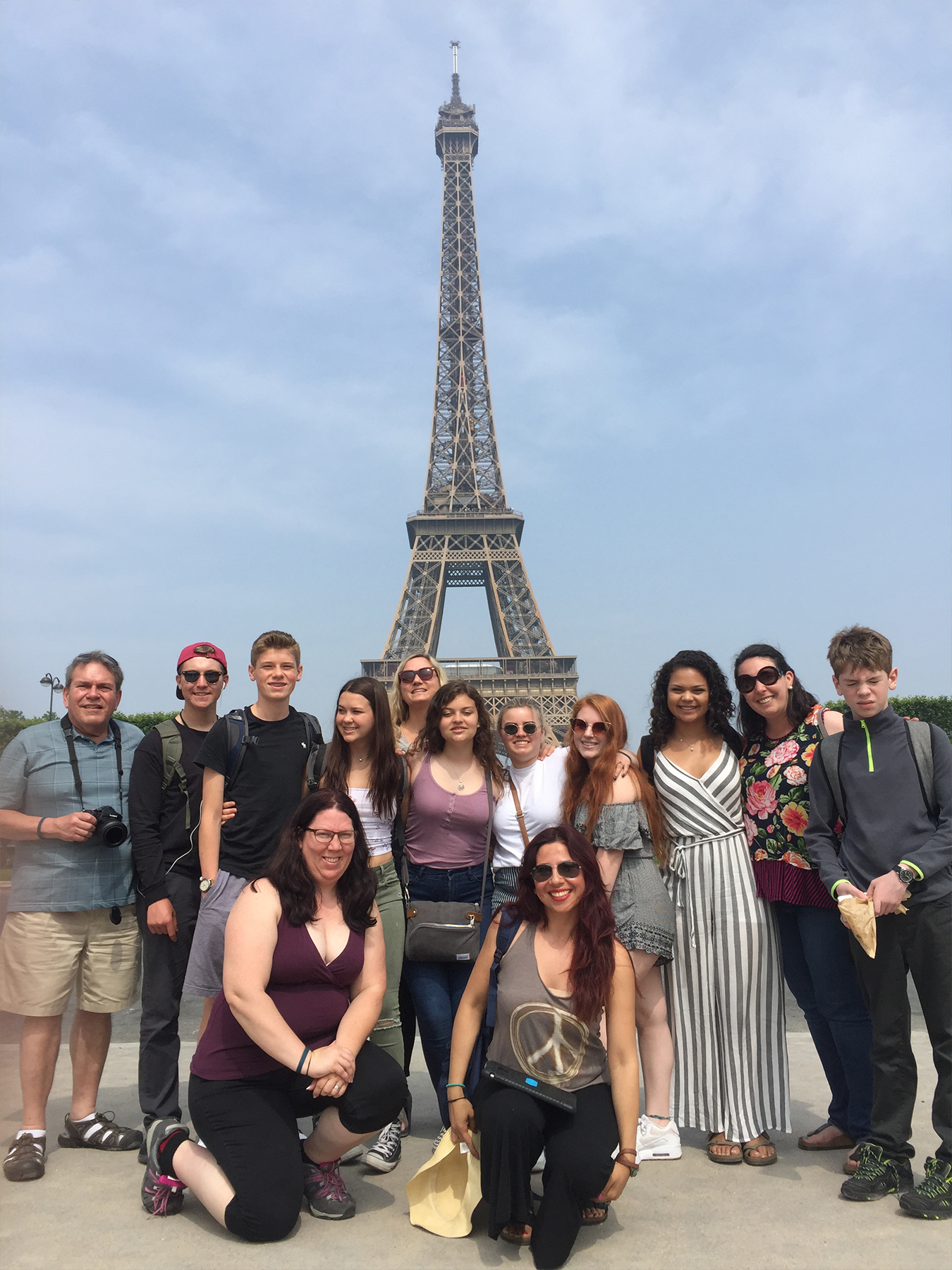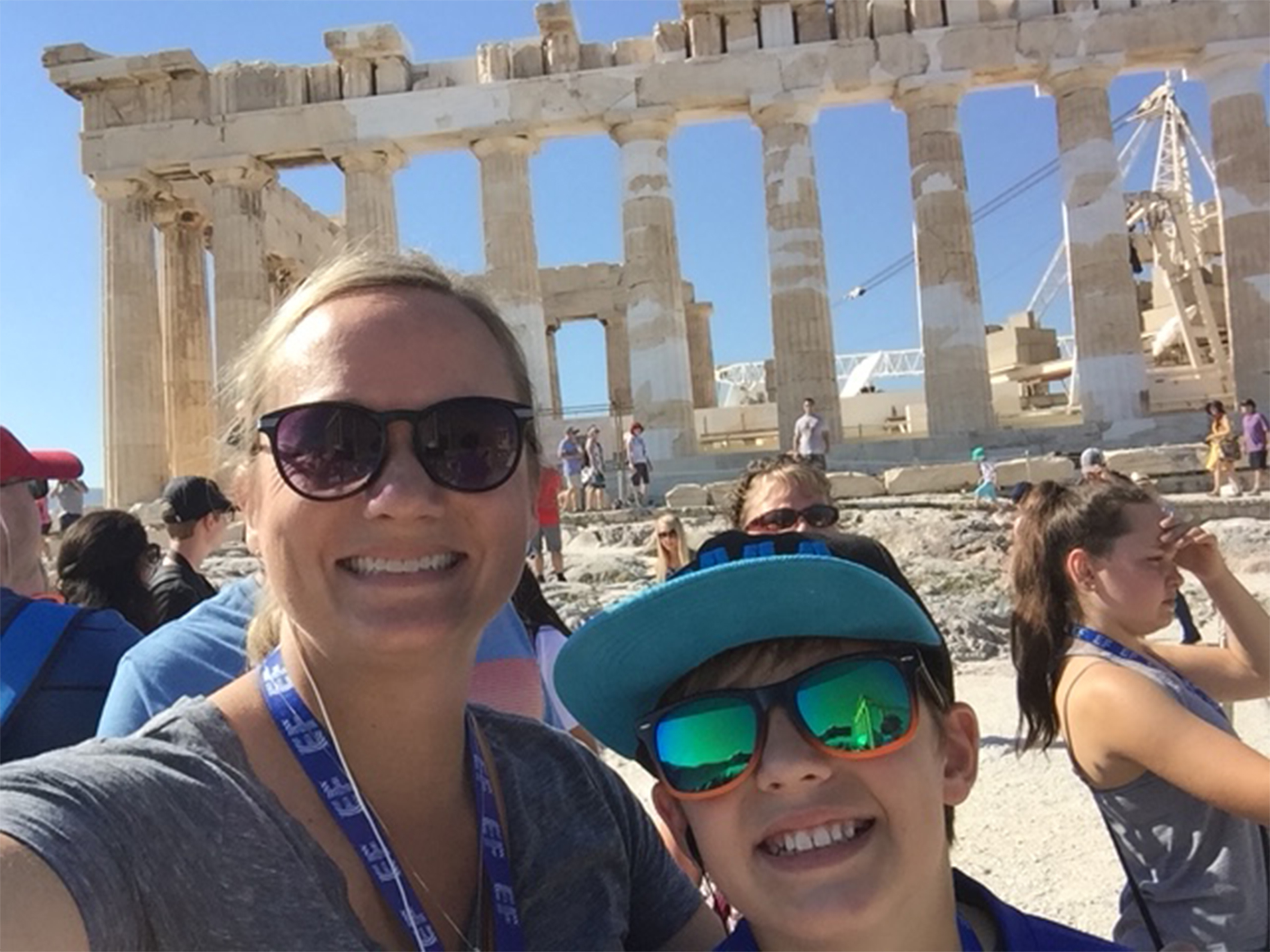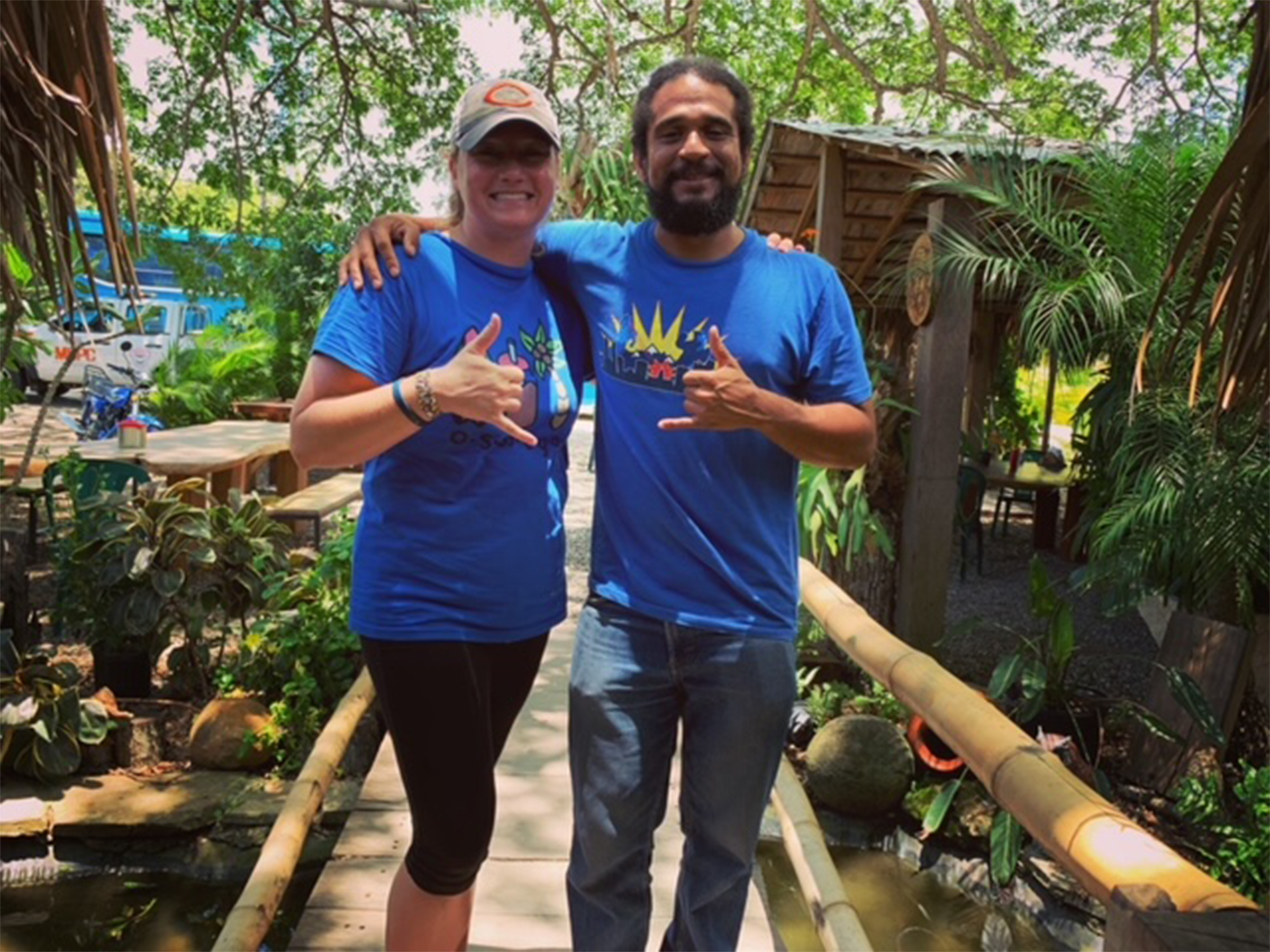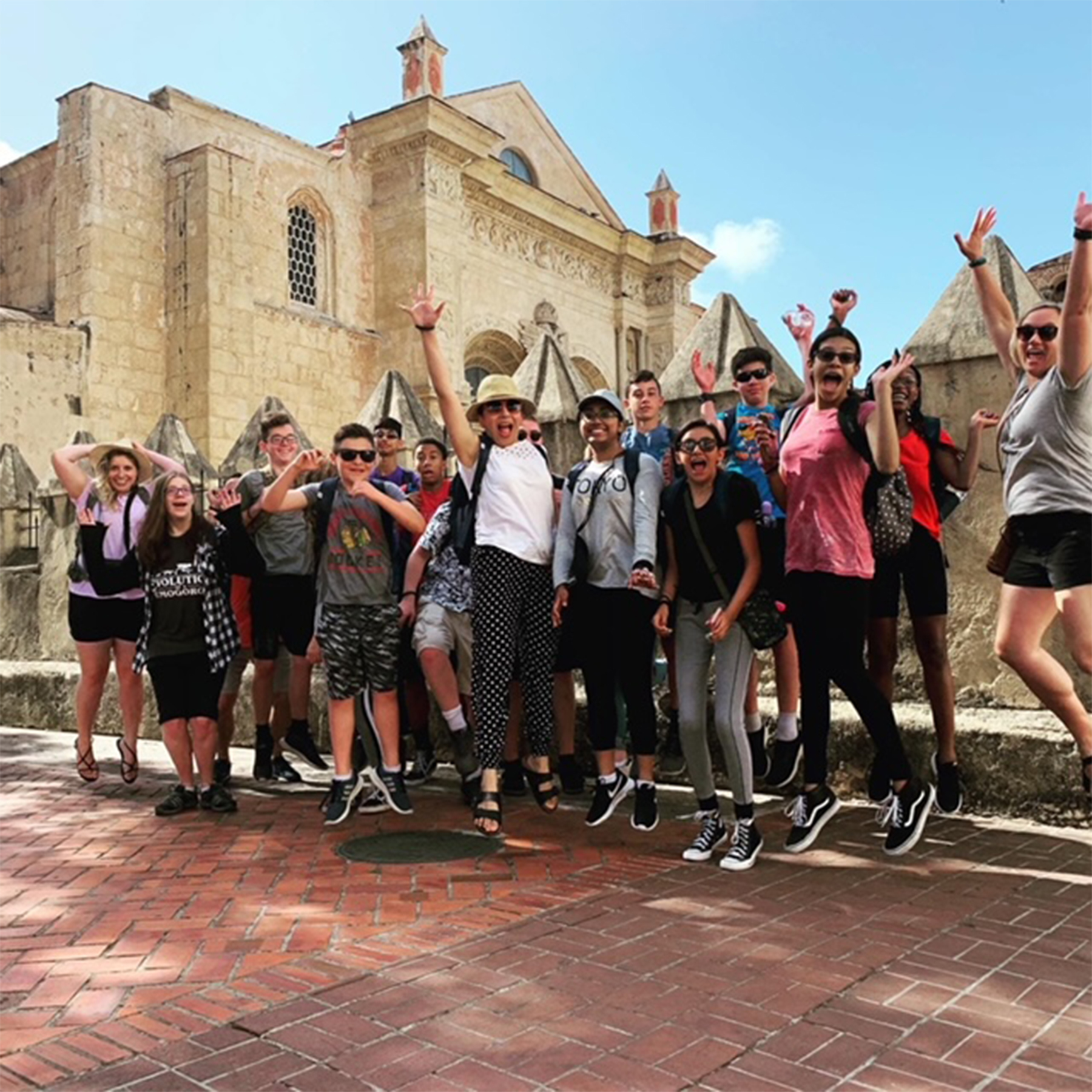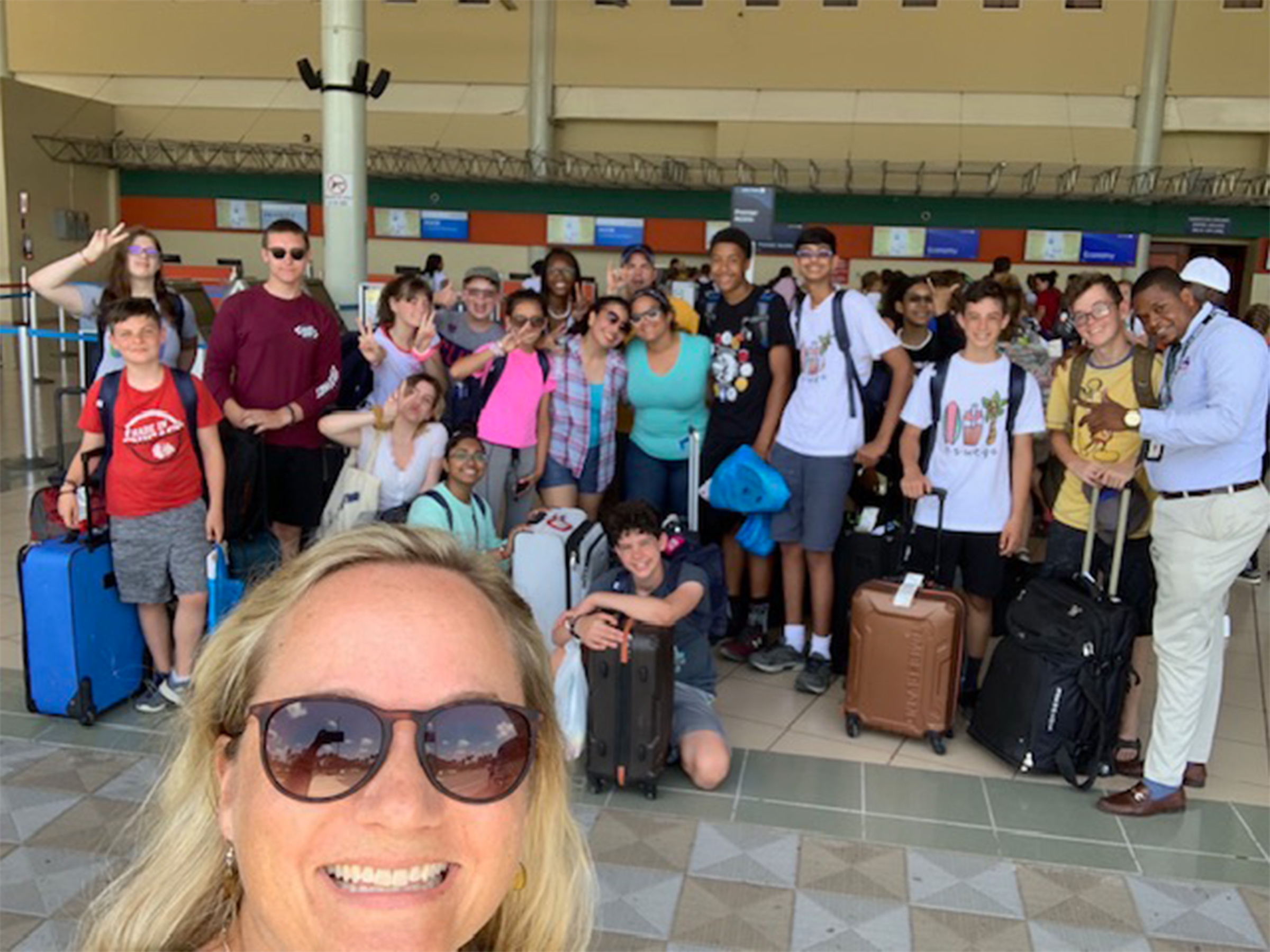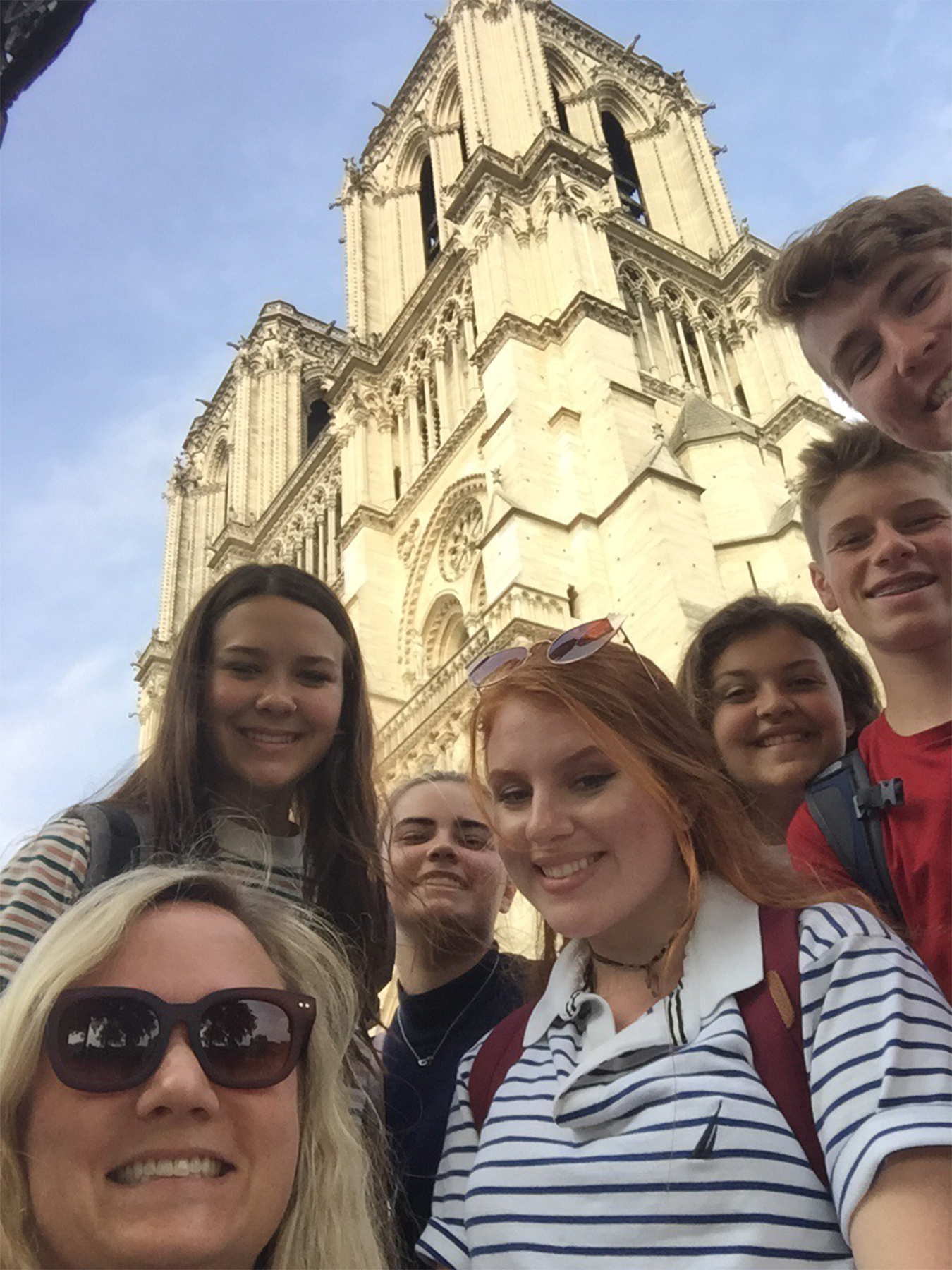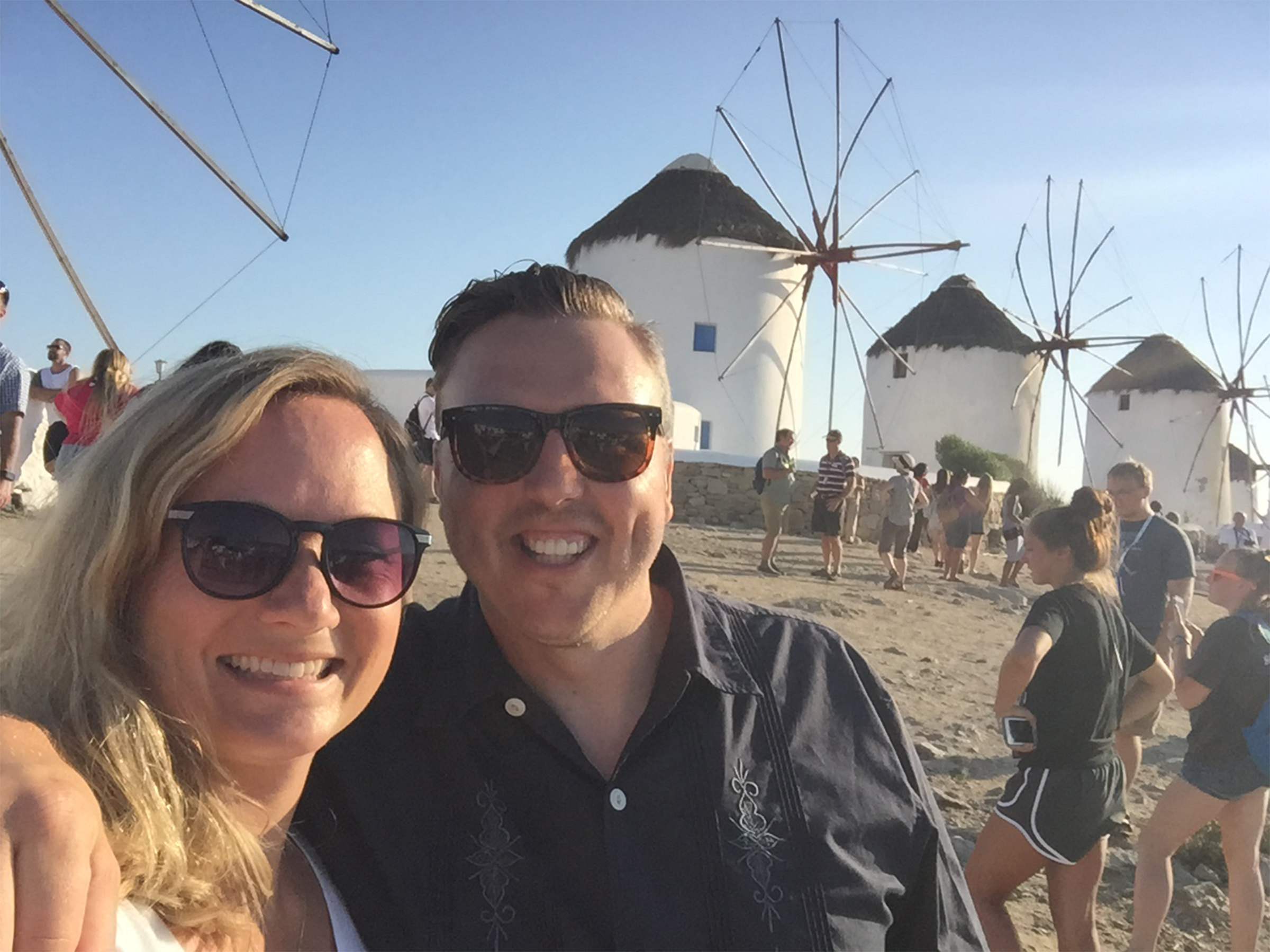
Empowering student artists to reflect the world
In art (and in life), all the answers are not always given to you. Plus, according to EF Group Leader and Illinois art teacher Heather S., leaving things open to interpretation allows for the best kind of learning to happen.
That’s why Heather is committed to providing students the time and space to reach unique conclusions and form their own opinions. “They’re still learning what they like and what they don’t like,” she explains. “They’re learning what kind of a person they are.”
She helps her high-schoolers learn to think for themselves by giving them the tools to seek out their own answers, dig deeper into the topics that interest them, and find their own student reflection activities—often out in the world. The final step of her empowering process? Encouraging student expression.
Experiential inspiration
In addition to painting, drawing, and design, Heather teaches students the value of reflection. “It’s important for students, and artists especially, to reflect on what’s happening in life around them,” Heather tells us. “Here we are, a suburban school on the outskirts of Chicago, but it seems like whatever is happening in Chicago is like a whole other world to them.”

Heather partners with Stephanie (far right) to create growth opportunities for their students.
A big believer in cross-curricular collaboration, Heather regularly partners with Stephanie, a social studies teacher at her school. The two artfully merge their disciplines to create lessons and student reflection activities that encourage students to think bigger and push boundaries. When it comes to helping students understand diverse ways of life and learn to make observations about the world around them, Heather and Stephanie believe in a very hands-on approach.
“Kids get so much out of being in a different place,” says Heather. “They’re inspired by experiencing things, and it makes them better artists. I think that’s the big part of travel: learning through experiences.”
Together, these teachers use travel and hands-on learning to turn classroom lessons into life experiences for their students—like a discussion about the Black Lives Matter movement that led to an exhibit with a local college. And a project about poverty that turned into a field trip to serve meals at the second-largest homeless shelter in Illinois. And a unit on the impact of WWII that sparked a trip across the world to walk in the places where the war’s history was made. After their trips, in lieu of traditional written reflections, students are asked to create a piece of art that serves as a snapshot of their thoughts and understandings.
In 2017, the pair led students on an EF tour centered around WWII and the Holocaust, which sparked discussions about conflict, discrimination, and human nature. “We asked ourselves ‘How can we take everything we’ve learned about humanity here back home?’” True to form, they decided art was the answer.

The following spring, Heather and Stephanie organized a student reflection activity around their trip—diving into everything from propaganda and hate to heroes and survivors—and turned it into an art exhibit for the entire community. “It was a very successful exhibition,” says Heather. “It prompted a lot of conversation.”
In addition to highlighting powerful works of art, the event demonstrated the ability art has to make even the heaviest topics approachable for students and community members alike.
We need to teach kids to think big and to observe life around them.
—Heather S., Group Leader
Going off-gradebook
Because the projects showcased in exhibitions like this one are very personal to each student’s experiences and opinions, they can’t always be evaluated in the traditional sense. In Heather’s classroom, every opinion is valid. She just wants students to be able to express the why behind their choices. In a sense, the message behind each masterpiece—and the conversations it inspires—is more important than the artwork itself.
“We want to teach technique and skill,” says Heather. “But we also need to teach kids to think big and to observe life around them.”
Like art, Heather reflects, takeaways from travel are subjective in all the best ways. When students learn by seeing and doing out in the world, they gain qualities like empathy, curiosity, and open-mindedness. And while these things can’t always be graded or quantified, they still add up to skills like collaboration and strategic thinking that help students succeed in future classes, careers, and beyond.
“[When you travel] you have this feeling, and you’re in the moment, and then something resonates—and it just catches you. And you can’t assess that on a rubric.”

Heather’s students lead an exhibition titled “Art and War”
Ideas on display
Heather’s philosophies for teaching and travel are rooted in her belief that students have valuable thoughts, ideas, and interests. Sometimes, they just need to be given space to explore and permission to share.
“You can still be a kid and have an opinion and you can make an impact,” Heather emphasizes. “You do have something important to say.”
By prompting students to explore relevant, and sometimes divisive, topics through travel and art, Heather has also helped them bring important conversations to the forefront of the classroom and the community.
“These exhibits are where students can showcase their ideas and make people think,” says Heather. “They can start a dialogue.” And her students’ artwork isn’t just inspiring—it’s award-winning.
More to explore
Since 2016, Heather and Stephanie have put on five art exhibitions (and counting) steeped in social justice initiatives and inspired by the world around them. Their students have interpreted everything from racial injustice to climate action to gender inequality through painting, sculpture, photography, music, and other mediums.
Recently, Heather hosted a virtual exhibition focused on social justice and art, and will continue the same theme for the next exhibition. With plans to evolve the format to include a hybrid of online and in-person components, Heather hopes to engage even more teachers and increase participation from students of all grade levels. And exhibitions aren’t the only thing on her calendar—Heather already has a number of EF tours in the works.
She’ll be leading a group of students to Greece and Italy in 2022 before traveling with her school’s National Art Honor Society and Spanish club to the Dominican Republic in 2023 on a Service Learning tour. Heather is also planning a professional development trip with the Illinois Art Education Association. Fittingly, this group of expressive educators plans to embark on the Artists of France and Spain tour.
With travel on the books and a world of inspiration and student reflection activities to be discovered, we can’t wait to see what Heather and her students will create next.
Related articles

